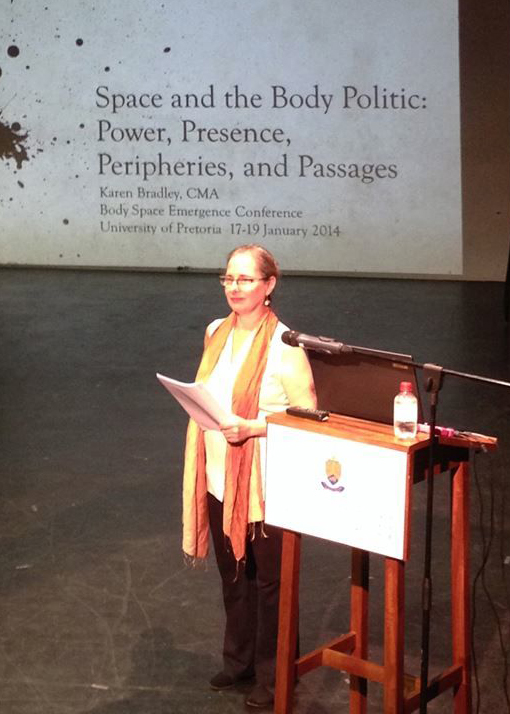Professor Karen Bradley quoted in Atlantic Monthly
September 23, 2014

"Neurological research has shown that movement stimulates the reasoning part of the brain and facilitates learning." Click here to read the article in the Atlantic Montly titled Mime as Art Therapy.
Selection of the Atlantic Monthly article is below. Once again Professor Karen Bradley's research is recognized! Click here to read the entire article.
 Other studies look at how movement impacts the brain. Jose Luis Contreras-Vidal, a computer engineer at the University of Houston, and Karen Bradley, chair of the University of Maryland’s graduate dance program—who met at a flamenco dance class—have been working on a project called “Your Brain on Dance,” which measures how the brain responds to movement. They studied dancers who were hooked up to electroencephalography technology, examining what parts of the brain were stimulated the most during specific movements.
Other studies look at how movement impacts the brain. Jose Luis Contreras-Vidal, a computer engineer at the University of Houston, and Karen Bradley, chair of the University of Maryland’s graduate dance program—who met at a flamenco dance class—have been working on a project called “Your Brain on Dance,” which measures how the brain responds to movement. They studied dancers who were hooked up to electroencephalography technology, examining what parts of the brain were stimulated the most during specific movements.
“You often think of the motor cortex as the sole location of movement in the brain,” Bradley says. “But look at something like flamenco, which is an improvisational form. Our research shows that this kind of artistic movement also engages the frontal lobe, which is where decision-making happens.” Previous neurological research has also shown how movement stimulates the reasoning part of the brain and facilitates learning.
Vidal-Contreras adds that it is easy for scientists to dismiss the tangible neurological impact of the arts. But the expressive shifts that a dancer makes engage both sides of the brain. Dancing to Beat It is more than just fun; it involves a complex negotiation between the brain and the body. Parents of Garrett’s students—many of whom lament public education systems that automatically placed their children in remedial courses—see how the troupe may be giving their kids’ brains a workout they don’t get anywhere else.

